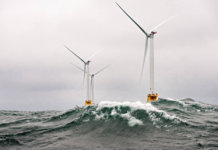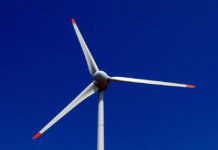According to a study conducted by the Energy Research Centre of the Netherlands, there is the potential to develop 135 GW of wind power in the North Sea.
The study, which also included input from the Deutsches Zentrum fur Luft- und Raumfahrt (DLR), made recommendations on the optimum way of developing wind power in the North Sea.
Using a geographic information system, DLR researchers developed a tool that identifies potentially suitable sites for wind farms in the North Sea. This involves linking data on average wind strength and water depths with data relating to nature conservation areas, maritime shipping routes, and oil and gas platforms.
The study describes the parameters that need to be established across the European Union in order to achieve optimum expansion of wind farms in the North Sea between now and 2030, while at the same time minimizing the negative consequences associated with this development.
If the countries whose coastlines border the North Sea were to implement their existing National Action Plans on Climate Protection and Expansion of Energy from Renewable Sources, 32 GW of wind capacity could be installed by 2020, according to the study. An additional 100 GW of wind power could be added by 2030.
Researchers believe that the potential capacity calculated in this study can only be implemented if favorable conditions are created in all countries with a North Sea coastline. This means that a larger area of the North Sea will have to be made available for wind power development, according to the study.
Other important planning factors needed to provide security for investors include identifying the precise nature of the supply conditions in every country, the price to be paid for power and the regulations governing the delivery of this power to their respective national grids, according to the study.



